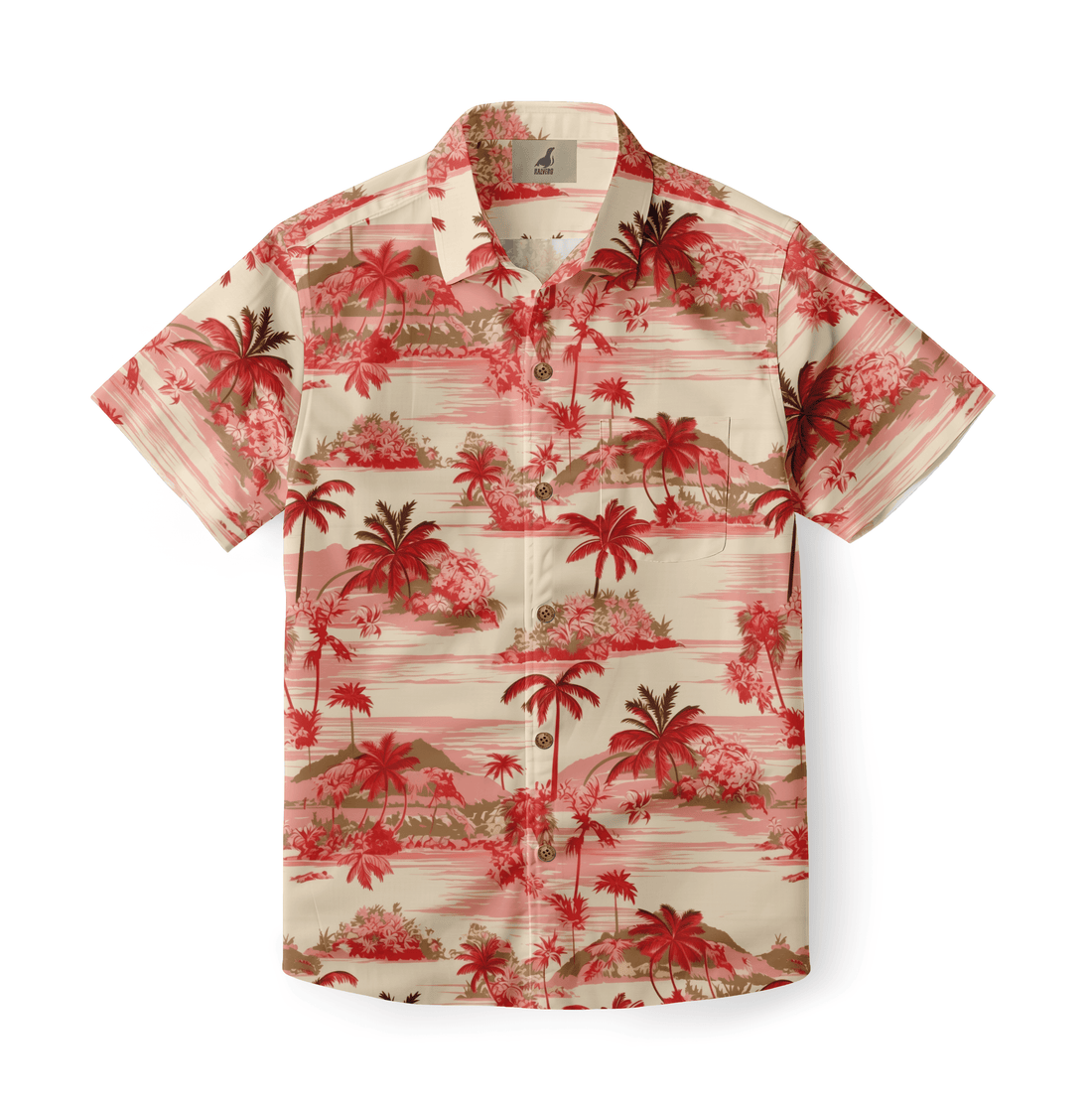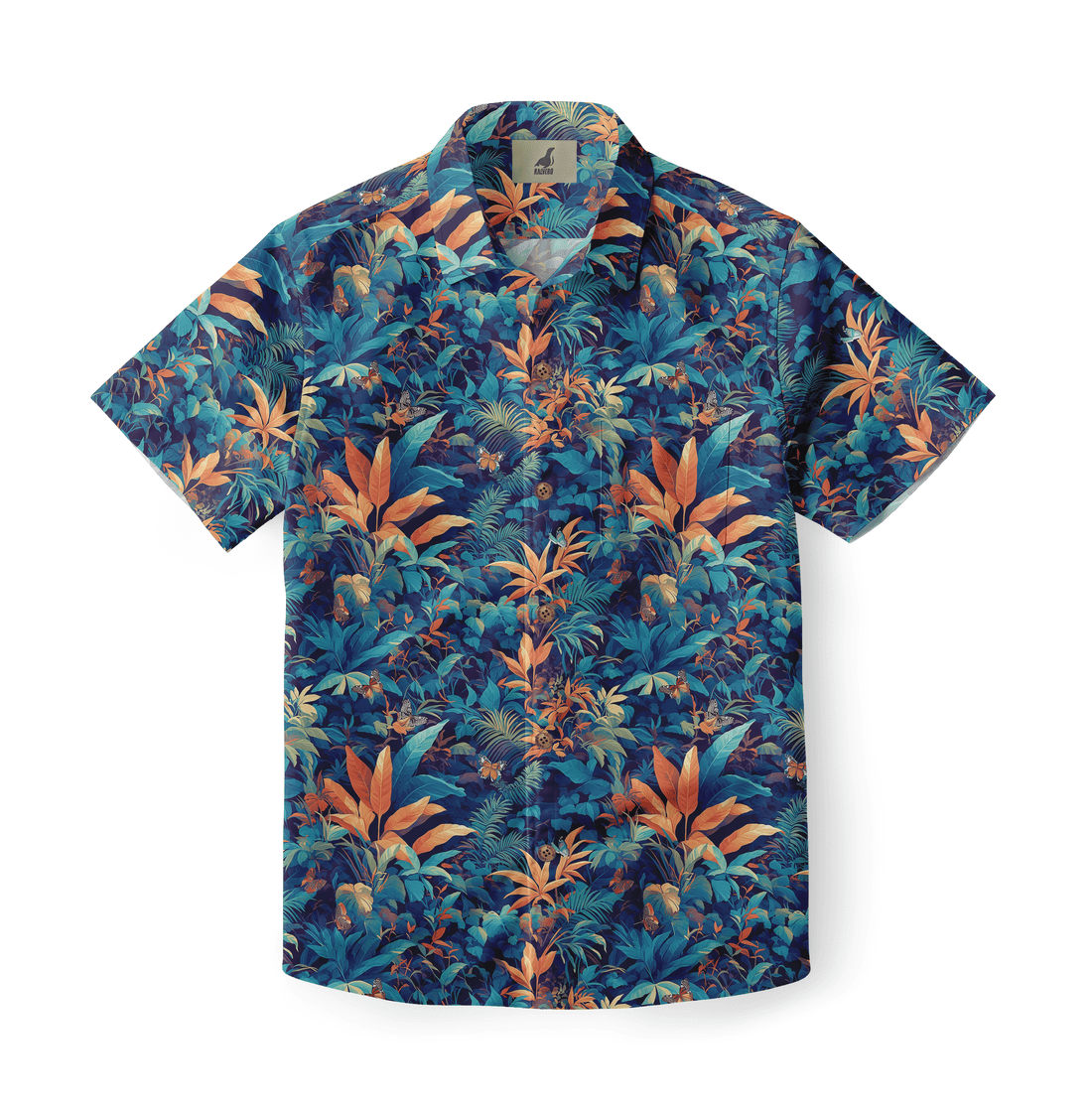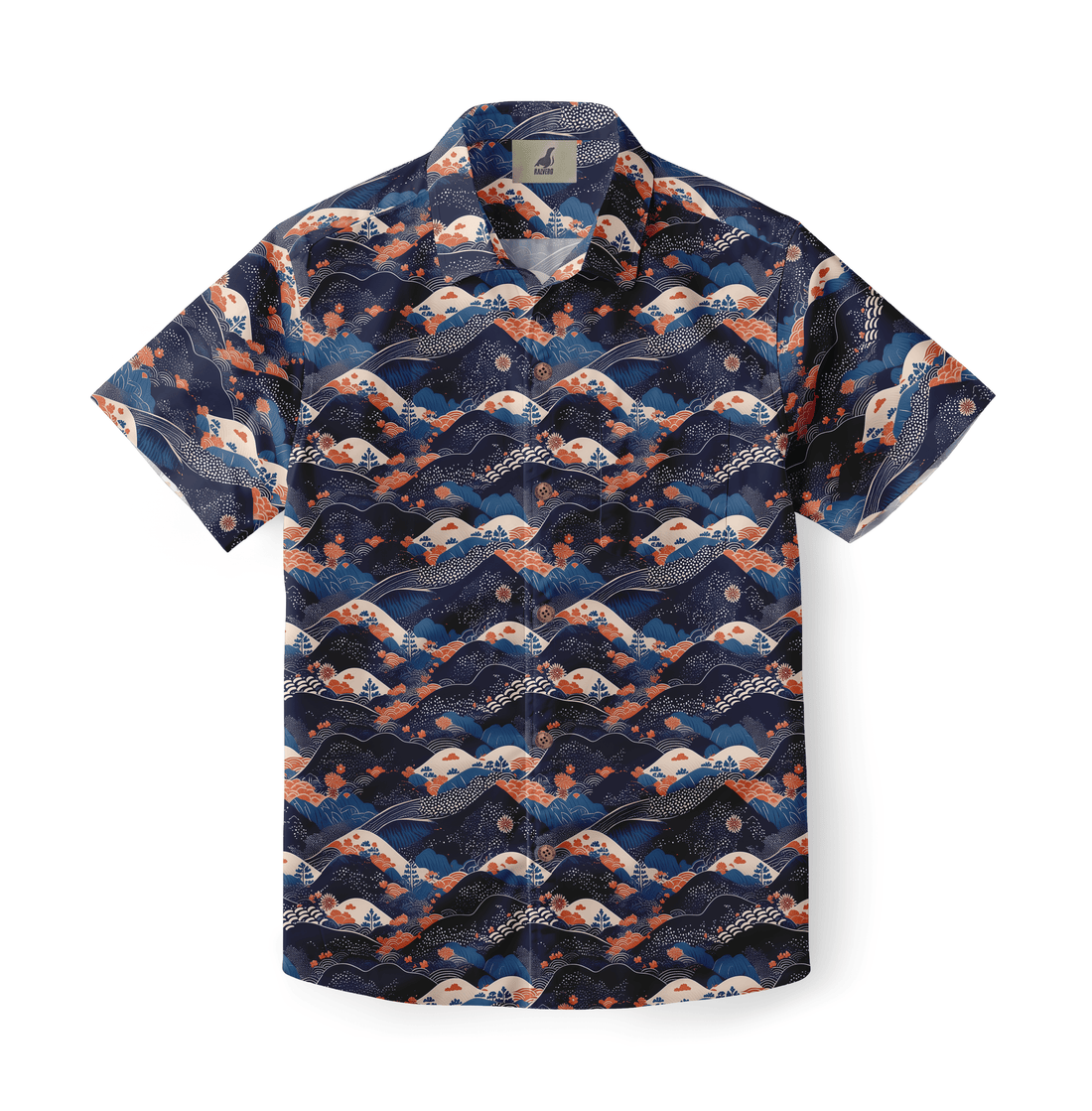The term "tropical clothing" covers a wide array of garments. It includes everything from Cuban guayaberas to Caribbean batik shirts. Each piece evokes a sense of sun-soaked leisure. Amidst this vibrant category, the Hawaiian shirt stands apart. It holds a unique and iconic status. So, What Makes Hawaiian Shirts Different from Other Tropical Clothing? The distinction is not based on a single element. Instead, it is a rich tapestry woven from specific history and cultural significance. It also involves distinct design philosophies and construction techniques. Understanding these differences reveals the true identity of the authentic Aloha shirt.
A Rich History: The Cultural Melting Pot of the Aloha Shirt
The story of the Aloha shirt begins in the 1920s and 1930s. It was born in the multicultural environment of Honolulu, Hawaii. The shirt is a true product of globalization. It represents a fusion of diverse cultural influences. Early versions were often made by Japanese tailors. They used leftover kimono fabric, known as kabe crepe. This introduced vibrant, Eastern-inspired prints. The shirt's tailoring drew inspiration from the Filipino barong tagalog. This traditional garment is worn untucked. The influence of Chinese silk added to the luxurious feel. These elements were combined with the classic Western collared shirt structure.
This origin story is unique. It contrasts sharply with other tropical garments. The guayabera, for example, has clear roots in Cuba and Mexico. Its design features structured pleats and embroidery. The Hawaiian shirt’s history is one of organic fusion. It was created by immigrant communities serving a diverse population. This multicultural foundation gives the Aloha shirt a unique narrative. It is a story of cultural exchange and island innovation. This rich heritage is one of the key distinguishing Aloha shirts characteristics.
The Visual Language: Defining Hawaiian Print Motifs
The prints on an authentic Hawaiian shirt are its most recognizable feature. They are not just random floral patterns. They are a visual vocabulary that tells the story of Hawaii. These motifs can be grouped into several distinct categories.
-
Classic Florals: Featuring prominent native Hawaiian flowers like hibiscus, plumeria, bird of paradise, and orchids.
-
Scenic and Landscape Prints: Depicting iconic Hawaiian scenes such as Waikiki Beach, Diamond Head crater, volcanoes, and waterfalls.
-
Oceanic Life: Celebrating marine life with patterns of fish, sea turtles (honu), dolphins, and coral reefs.
-
Cultural and Historical Motifs: Incorporating designs related to Hawaiian royalty, traditional tapa cloth patterns, or images of figures like King Kamehameha.
-
Quilt and Geometric Patterns: Inspired by traditional Hawaiian quilting, featuring symmetrical and intricate designs.
These print motifs are deeply tied to the identity of the islands. A true Aloha shirt uses these themes to celebrate Hawaiian nature and culture. A generic "tropical" shirt might feature a non-native palm tree or a generic flower. An authentic Hawaiian shirt, however, often showcases specific, meaningful flora and fauna. This creates a much deeper connection to its place of origin. It is a wearable piece of art that reflects a unique ecosystem and heritage.
What Makes Hawaiian Shirts Different: The Print Design Philosophy
The application of the print is a major point of difference. Authentic Hawaiian shirts are famous for their "all-over" print design. This means the pattern flows continuously and seamlessly across the entire garment. The design is not confined to specific panels. It treats the whole shirt as a single canvas. This creates a fluid and dynamic visual effect. Some of the most prized vintage and modern Aloha shirts feature intricate, large-scale scenic prints. These scenes wrap around the body, telling a continuous story.
This philosophy contrasts with other types of shirts. For instance, a classic guayabera is defined by its structure. Its decoration comes from vertical pleats (alforzas) and embroidered panels. The shirt's body is typically a solid color. A generic floral shirt often uses a simple, repeating pattern. The design is a small motif that is tiled over and over. The Hawaiian shirt's approach is more artistic and less mechanical. It is about creating a complete visual narrative. This makes it structurally and aesthetically unique.
Construction and Material: A Comparative Look
| Feature | Hawaiian "Aloha" Shirt | Guayabera Shirt | Generic "Tropical" Shirt |
|---|---|---|---|
| Print Style | All-over, often non-repeating scenic or floral motifs. | Solid color with structured embroidery and pleats. | Simple, repeating floral or novelty patterns. |
| Often a perfectly matched pattern pocket. | Typically four symmetrical patch pockets. | Standard, unmatched chest pocket. | |
| Fabric | High-quality cotton, rayon, or silk. | Traditionally linen or cotton. | Often polyester or low-grade cotton blends. |
| Buttons | Often made from coconut, wood, or mother-of-pearl. | Standard plastic or polyester buttons. | Standard plastic buttons. |
The details of construction clearly set these garments apart. The table above highlights key differences in design and materials. A high-quality Aloha shirt is defined by its craftsmanship. The use of natural materials like coconut for buttons adds an authentic touch. The fabric choice, favoring rayon or high-grade cotton, ensures a comfortable drape and feel. In contrast, many mass-produced tropical shirts prioritize low cost. They often use synthetic fabrics and simpler construction methods. The guayabera maintains its own unique set of construction rules, centered on its pockets and pleats.
What Makes Hawaiian Shirts Different: The Art of the Matched Pocket
Perhaps the most telling sign of a high-quality, authentic Aloha shirt is the matched pocket. This is a detail that casual observers might miss. It is a hallmark of superior craftsmanship. A matched pocket means the fabric of the chest pocket is cut from the same cloth. It is then aligned so the print on the pocket matches the pattern on the shirt body seamlessly. The pocket seems to disappear into the shirt's overall design. This technique requires extra fabric and meticulous skill from the tailor.
This level of detail is rarely found on generic, mass-market tropical shirts. On those garments, the pocket is simply cut from a random piece of fabric. The pattern is misaligned with the rest of the shirt. This creates a jarring visual break. The matched pocket is a testament to the shirt's quality. It shows that the maker valued artistry and precision over cutting costs. When looking for a truly authentic garment, checking for a matched pocket is a key step. It is a small detail that speaks volumes about the shirt's heritage and quality.
Cultural Significance: More Than Just a Shirt
In Hawaii, the Aloha shirt is not just casual wear. It is a respected part of the local culture. It is accepted and worn as business attire and even formal wear. The concept of "Aloha Attire" for weddings and professional events is a testament to this. A high-quality Aloha shirt is seen as a way to show respect while embracing the island spirit. It is a symbol of local identity and pride. This elevated status is a major differentiator. The shirt transcends its "vacation" image within its home culture.
This contrasts with many other tropical shirts. While a guayabera is formal wear in some Latin American cultures, many other "tropical" shirts are not. They remain strictly in the category of casual or beach attire. The Hawaiian shirt holds a unique dual identity. It is beloved globally as a symbol of leisure. At the same time, it is revered locally as a versatile and appropriate garment for nearly any occasion. The tradition of "Aloha Friday," the precursor to casual Fridays worldwide, started in Hawaii. This further cements the shirt's important cultural legacy.
What Makes Hawaiian Shirts Different: A Summary of Key Distinctions
In conclusion, several key factors set the Hawaiian shirt apart. Its unique history as a product of cultural fusion in Hawaii provides a rich backstory. Its visual language, drawn from the specific flora, fauna, and culture of the islands, gives it a distinct identity. The all-over print philosophy and the craftsmanship detail of the matched pocket demonstrate a higher level of artistry. Finally, its elevated status within Hawaiian culture as acceptable business and formal wear gives it a significance that few other garments in the tropical category share. These elements combine to create a shirt that is much more than a simple piece of clothing. It is a cultural icon.
Frequently Asked Questions
What is the most traditional material for an authentic Aloha shirt?
The most traditional and sought-after material is high-quality rayon, specifically rayon crepe or challis. Early shirts were also made from Japanese kabe crepe. These fabrics offer a smooth, silky feel and an elegant drape that beautifully showcases the intricate prints. High-quality cotton is also a very common and authentic choice.
Is a shirt still a Hawaiian shirt if the print is not of flowers?
Yes. While floral prints are iconic, authentic Hawaiian shirts feature a wide range of motifs. These include ocean life like fish and turtles, scenic landscapes of volcanoes and beaches, and patterns inspired by traditional Hawaiian tapa cloth or quilts. The defining factor is that the theme is connected to Hawaiian culture, history, or nature.
How can I tell if my vintage Hawaiian shirt is a high-quality one?
Look for key markers of craftsmanship. Check for a matched pocket where the pattern aligns perfectly. Examine the buttons; authentic vintage shirts often use coconut shell or wood buttons. The fabric should feel like high-quality rayon or cotton, not stiff polyester. Finally, check the label for heritage brands known for their quality.








